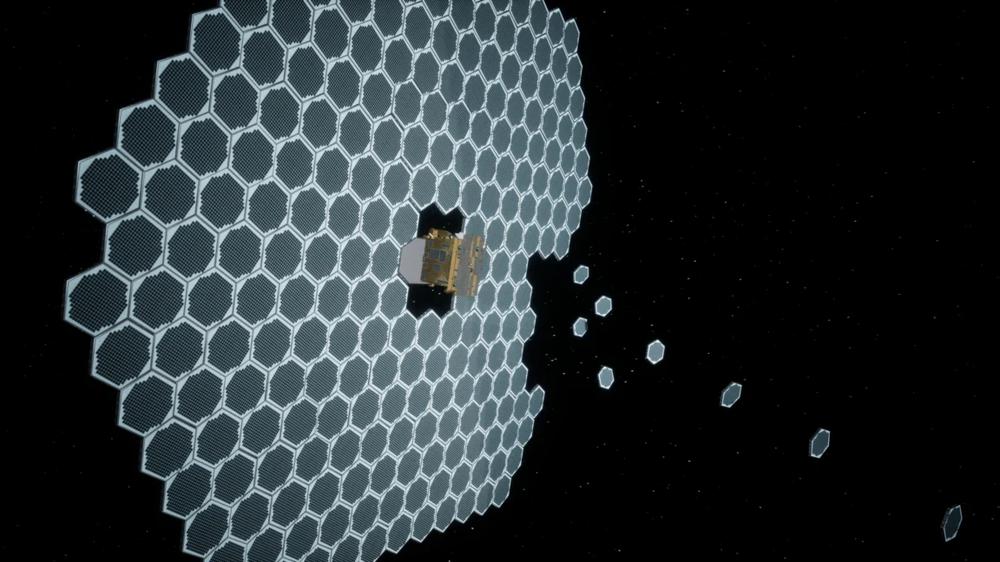There has been much discussion in the space community recently about building large data centers in orbit to avoid the environmental consequences of sprawling computing facilities on Earth. These space-based data centers could take advantage of the always-on, free fusion reactor at the center of the Solar System.
Proponents say this represents a natural step in the evolution of moving heavy industry off the planet’s surface and a solution for the ravenous energy needs of artificial intelligence. Critics say building data centers in space is technically very challenging and cite major hurdles, such as radiating away large amounts of heat and the cost of accessing space.
It is unclear who is right, but one thing is certain: Such facilities would need to be massive to support artificial intelligence.
That’s… a big solar array
Nvidia recently made headlines by announcing that one of the companies it is partnering with, Starcloud, plans to build a 5-gigawatt orbital data center with “super-large solar and cooling panels approximately 4 kilometers in width and length.”
To put that into perspective, the eight main solar arrays on the International Space Station—the largest ever assembled in space, requiring many space shuttle launches and spacewalks—span about 100 meters and produce a maximum of about 240 kW. That’s about 0.005 percent of the power Starcloud intends to generate.
Needless to say, with a traditional approach, that’s a big ask in terms of launch and assembly costs.
However, it sounds a little more feasible if such an array could be assembled autonomously. And on Thursday morning, Starcloud, along with a new in-space assembly company, Rendezvous Robotics, announced an agreement to explore the use of modular, autonomous assembly to build Starcloud’s data centers.
“Our mission is to build things that are going to be useful in space,” Phil Frank, chief executive of Rendezvous Robotics, told Ars. “It could be large, flat surfaces like a Solar array. Ostensibly, the size is not the limit anymore, because we can additively assemble things and then reconfigure them in orbit. And that’s the core thesis of our company that led to us talking to the Starcloud team.”
Based on tech developed at MIT
Rendezvous Robotics was founded last year by Frank, veteran space executive Joe Landon, and an inventor named Ariel Ekblaw.
The company’s technology is based on research by Ekblaw, who founded the Space Exploration Initiative at MIT Media Lab in 2016, and led development of a self-assembling tile technology called Project TESSERAE. She has already completed a couple of tests with NASA in space, and another larger demonstration with 32 dinner plate-sized tiles is planned for next year on board the International Space Station. The new company seeks to commercialize Ekblaw’s work.
The tiles are fully autonomous, with their own batteries and edge processor, and use swarm robotics software and electromagnetic control to self-assemble and self-correct. The technology is intended to be scalable to very large systems.
This design allows Rendezvous to stack dozens of tiles to fit inside a rocket’s payload fairing, which, once in space, can be released to self-configure into a preferred configuration. There is no need to unfurl a large solar array or break a spacecraft into multiple pieces.
“With the state-of-the-art [assembly] today, you have to either send a person with a wrench to space to assemble, use a robotic arm and plan out each and every movement of that arm, or design a complicated origami folding mechanical system, which limits how big you can build,” said Landon, a co-founder. “So those are the three techniques that we can replace.”
Laying the groundwork
The agreement will allow Rendezvous to work with Starcloud engineers to understand their requirements, and perhaps tailor some of the currently planned tile demonstration missions to show that the solar array and radiators they need to build at scale are feasible.
“Starcloud’s mission is to move cloud computing closer to where data is generated,” Starcloud CEO Philip Johnston said in a statement. “Partnering with Rendezvous gives us the ability to scale our orbital power and cooling systems to meet the growing demand for space-based datacenters and AI workloads. Together, we’re laying the groundwork for a new class of orbital infrastructure.”
There is a very long way for all of this to go, of course. However, there is ample funding available for companies that can meet the infrastructure demands of AI data centers in the near future. Perhaps space is the place.

 How Silicon Valley enshittified the internet
How Silicon Valley enshittified the internet